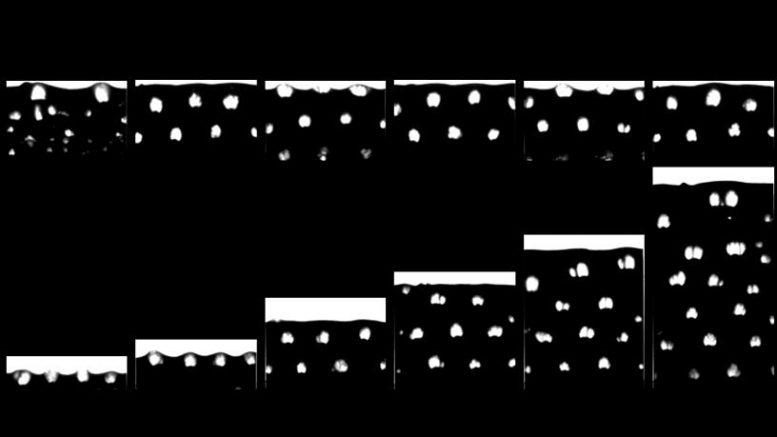A new way to control the motion of bubbles from researchers at New York-based Columbia Engineering might one day help separate valuable metals from useless dirt using much less energy and water than today.
When mining for metals such as copper, used in most electronics, and the lithium used in many batteries, only a tiny fraction of the mined material is useful metal, with the vast majority just useless dirt-like particles.
“We have to separate the useful metals from the useless particles, and we do this by blowing air bubbles up through them,” said Chris Boyce, assistant professor of chemical engineering at Columbia Engineering, in a press release.
“This process utilizes a large amount of energy and water, causing climate change and water shortages, thus creating problems we are trying to prevent. We have this issue in part because we currently cannot control the motion of these bubbles.”
Now Boyce and his colleagues reveal that if they vibrate these particles while blowing air up through them, the ordinarily chaotic motion of these bubbles becomes orderly and controllable. The vibrations cause the particles to quickly shift between solid-like to fluid-like behaviour, which helps structure the bubbles into regularly spaced triangular arrays.
“I think the simple addition of vibration to go from chaos to order is beautiful,” Boyce said. Their study was published on August 23 in the journal Proceedings of the National Academy of Sciences.
Having a way to control the behaviour of these bubbles can help scale-up and optimize separation techniques. “We expect that the ability to create structure inflows can reduce energy and water use in mining as well as improve the efficiency of many clean energy processes,” Boyce said.
The researchers now aim to apply this structured bubbling to sustainable mining separation techniques.


Be the first to comment on "How bringing order to chaotic bubbles can make mining more sustainable"